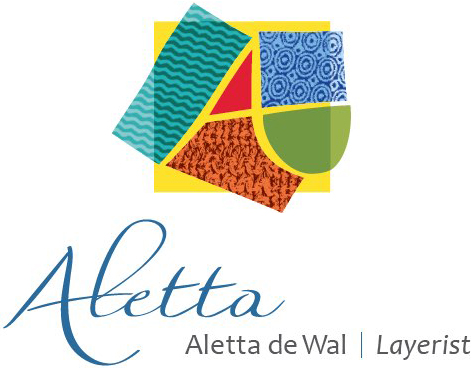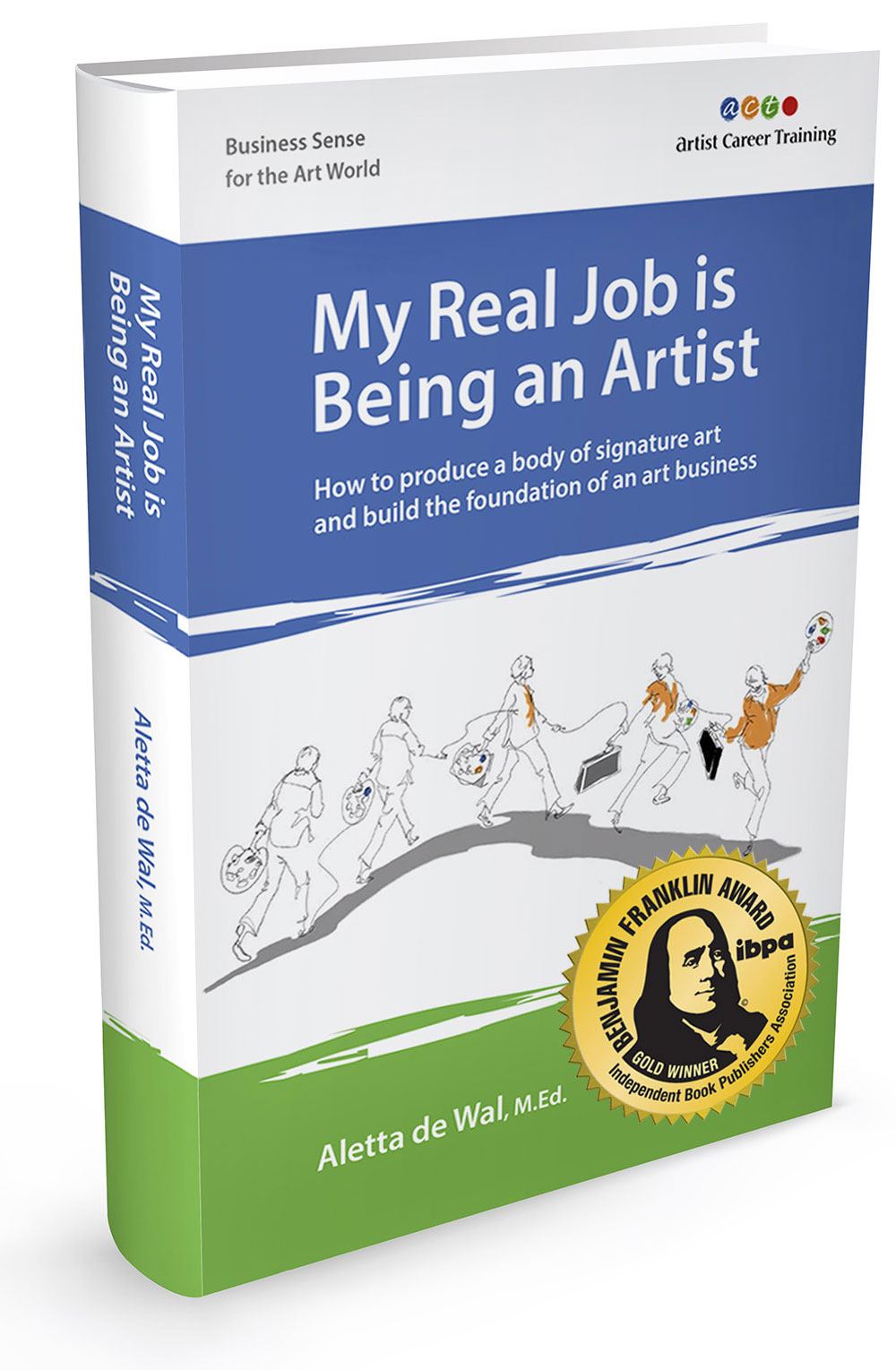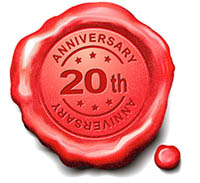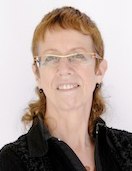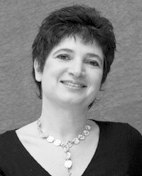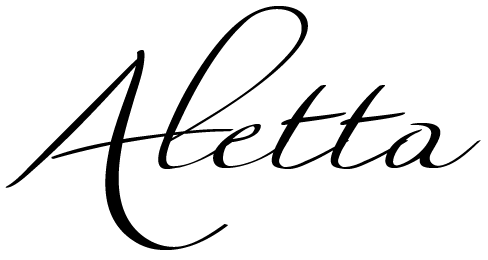There is often additional information on the recording that is not in this written interview. Inspire yourself and listen while you make art.
________________________________
My primary goal in these interviews is to inspire you with stories of people who make a living making art and who consider it a "real job." The artists I interview here have valuable tales to tell you about how to make a living from making art and still have a life. Edd Cox www.eddcoxfineart.com
Edd Cox www.eddcoxfineart.com
Edd Cox was born January 1948 in Bremerton, Washington and grew up in South Tacoma near a woods and lake linked by a broad field long before the freeway was built. In eighth grade he had his first art instruction with the great artist and teacher Richard Rhea with whom studied all media. He started oil painting at fourteen. After a year at Western State College and his first college level painting course, in the summer of 1969 Edd was drafted as an Army Illustrator and spent a year in Baltimore, Maryland where for the first time he experienced world class art in New York, Washington DC, Boston and Baltimore. The following year Edd was stationed in Saigon, Vietnam in what he describes as "an exotic year of living off base at the foot of a dead end street in an apartment with a rooftop patio."
Edd returned to the northwest and to college and found a graduate student at the University of Puget Sound to teach him wheel throwing. He immersed himself in ceramics, sculpture and printmaking for a year; began throwing and teaching wheel ceramics, firing kilns and was introduced to raku, bronze casting, foundry work and embossed serigraphs. He again studied with Richard Rhea and also with Frank Dipolito in Printmaking. Edd completed his Fine Arts degree at the University of Washington in 1977 with a major in painting and minor in ceramics.
After graduation he spent the later part of the year on a freighter in the Aleutian Islands. Returning from the Aleutians, Edd acquired his first independent studio and later became an art studio landlord. He has taught extensively in public school and museum Art programs in video animation, painting, drawing and ceramics.
A.C.T.: What prompted you to start your professional art career?
 Temple Garden - Magnolia 3 Oil/Canvas 60x42" 2008 © Photo Edd Cox
Temple Garden - Magnolia 3 Oil/Canvas 60x42" 2008 © Photo Edd Cox
There was not one defining moment, event or person but a cascade of influences that finally, over time, trued my course to be a painter.
My five-year old imagination would be occupied for hours when my grandmother, Cecilia, would ask me to draw with pencils and paper from my grandfather's desk. When I was older she asked me to build birdhouses.
I just kept drawing, building gliders and playing electric guitar. When I was fifteen, I taught myself oil painting, subscribed to the Time/Life Art series of books and was inspired by the artists I read about. By eighteen, I was entering local exhibitions, gathering momentum through experience and developing skill through practice.
During high school, I worked after classes, on weekends and in the summers at a small electrical engineering firm assisting with drafting. I was good with a pencil and set my sights on a career as an architect, but after two years of working in an office environment and with below par skills in math, I decided that my true path was in the visual arts. I am a romantic and art better suited my personality. This acknowledgment gave me focus.
After a tour in Vietnam, I dedicated four years at the University of Washington and plenty of studio courses. With a degree, I headed to Alaska, working on a freighter and returned to Seattle in 1978 to find a real studio. To be an amazing artist/painter was my goal.
A.C.T.: What makes an artist professional?
To be a professional artist, you have to have an incredible amount of desire, patience and persistence while you practice your techniques, and really learn use your tools and experiment. You have to feed the creative energy and use everything you have inside of you.
So a professional artist is a dedicated person who has spent, say 10 years, working consistently to evolve and refine a deep knowledge of tools, medium, and techniques and is able to create a sustainable lifestyle in the arts.
A.C.T.: What is your artistic direction? What is your "life's work" as an artist.
When I began, nothing would satisfy me short of being as good as Rembrandt, Velazquez or Caravaggio. I loved the light, the classical references and the story telling. Later I noticed Picasso, Matisse and Rousseau. Surrealist Salvador Dali was a favorite and he was influenced in his early years by Velasquez. I also discovered Asian and African artists and adopted some of their techniques.
When an artist has been on the journey long enough, you develop a personal language. For my oil painting, sculpture, ceramics and prints, I learned two visual languages: one based on realism, the other in my imagination, of images and icons. Working in a photo-realist style, I experimented with combining multiple canvases of differing images and adding carved wood, branches, glass and ceramics. I also created paintings based on line drawings that emphasized shape and color. I now usually add a surrounding border of ceramic and glass to my paintings.  © Photo Edd Cox
© Photo Edd Cox
A.C.T.: What legacy do you want to leave?
I have a stack of sketchbooks where you can see my evolution. I work on both sides of each page with a ballpoint pen - no edits; sign and date each one. I hope to tell some deep, mystical stories with a good dose of humor.
- I hope my work is inspirational and thrilling, a catalyst that moves the spirit to seek a higher awareness.
- I want people to see my diligent experimentation and exploration, my integrity and just plain hard work.
- I want an exhibition in each of the best museums in the world. Maybe the museum up the street, the Seattle Art Museum, would consider me worthy? It is up to me.
I am 65 in January. I guess I have another 10 years before a retrospective is in the works. 2022 would be great, when I hope the collective imagination is fully alive.
A.C.T.: What is your art business model?
 Temple Garden - Kyoto 3 Oil/Canvas/Glass 60x42" 2008 © Photo Edd CoxYou develop a simple strategy and see if it works. You can learn as you go. Good results shape the structure as you grow:
Temple Garden - Kyoto 3 Oil/Canvas/Glass 60x42" 2008 © Photo Edd CoxYou develop a simple strategy and see if it works. You can learn as you go. Good results shape the structure as you grow:
- I create the most magnificent works I can; exhibit in the best possible environment; obtain a financial return to do it again to support myself and my creative studio.
- I try to stay focused with the business side of art. Doing commissions made me realize the importance of a contract to document how much I get paid. I can accept credit cards in payment. I discovered computerized accounting to keep track of what I earned and to pay taxes. I have always done most of this myself but with the help of professionals who really know each of these tasks.
- I use all my skills to earn a lifestyle. I now have a street level gallery and studio in a great location. I do all the jobs: I create, photograph, compute, market, sell, account, ship and sweep the sidewalk. I am working on developing a creative team so I can focus more on creating. One day I will be a skipper, with a brilliant crew sailing the exciting energy of the art world.
- I love teaching and teach a six week "Oil Painting Workshop" in my studio as well as Mercer Island where I teach art at grade school.
A.C.T.: You are also in the business of managing creative space for artists. Tell us how you got started and how that led to your grand new project.

In 1981, I leased a fifth floor, 7500 sq. ft. space near the waterfront in the historic Pioneer Square neighborhood of Seattle. The building manager was an amateur jazz musician and a Sunday painter, so he saw the possibilities in a space with a row of light bulbs and a demolished toilet, but beautiful post beams and great light. We added drywall, fixed the plumbing and electrics. An amazing south facing warehouse with 4' x 8' windows with a north and south side, it quickly filled up with artist studios and became the Art Building of Seattle. ArtWalk (which originated in Seattle in 1981) takes place every first Thursday of each month so hundreds of people enjoyed the scene at 619 Western Avenue. Seeing exhibits, talking with artists, collecting, dancing to live music and meeting new friends. It was wonderful. I created there, and helped other artists do so in an artists dream studio, for 30 years.
When a mega project got underway below the building, with a 56' diameter tunnel, this great building that was so suitable for artists would not withstand the construction. Within 60 days, 120 artists had to leave the artist's perfect studio building for a landscape of limited studio space opportunities and much higher rents than what I had charged.
The Department of Transportation offered financial assistance of up to $50,000. The bigger your business the more assistance you get. I had created two businesses at 619: Edd Cox Fine Art, my studio and GoldShoe Studios & Gallery, the floor I leased to artists. I had separate bank accounts and tax filings and that was what the D.o.T wanted to see, so I got about $35,00 for re-establishment and rent increases.
It seemed like a huge amount of money, but contractors had estimated about $65,000 to $70,000 to complete the project, so I am fundraising to raise the rest.
This venture has been so educational. When I talk about the project with other business people, they ask "What have you got?" and "What do you need?" and I have to answer them in about two minutes. I was talking with a restaurant owner in his "office" - the entrance - so I pulled out my iPad of images together with a blueprint so he could see what I described. Being able to tell my story in a dynamic way, clearly and simply helps people align with my vision. I always say "I would love to have you as part of my team. Here is what I can do for you" and describe what they will get from the fundraising before I ask for anything from them.
Edd Cox Fine Art relocated three blocks south to a street level studio and gallery. I had the option and eighteen months to decide if I would re-create GoldShoe Studios & Gallery, my second business. When I found another street level space two blocks away, I gave thought for 60 days and decided to undertake the renovation of the space into artist's work studios and an exhibition gallery.
The New GoldShoe Studios & Gallery was leased in January and I naively thought it would take about three months. I visited the building department for the first time and began drawing the plans for the new space. Deciphering codes, making multiple changes and after three building department reviews and hiring an architect for the last stretch, the drawing were approved. It took six months just for that! In the meantime, I bought all the materials I would need to refit the space for artists. I did a lot myself, which saved money and l learned new skills. I now had a building permit - the first major milestone of the project.
619 was a very bohemian above the street affair - a loft in the sky. Now we are street level and commercial. So now, I am a project manager: managing scheduling, ordering materials, demolishing, designing and building with a tiny crew. Walls are going up, studios are taking shape, the space is defining itself through a vision and lots of effort. Like climbing a mountain, there are many skills to learn and many obstacles to overcome. When the project construction is finished, there will be an imagination laboratory and creative development center for an entrepreneurial artist collective of eleven studios and gallery that will become the New GoldShoe Studios & Gallery. We'll all be very socially active in the neighborhood and community.  I think I finally understand entrepreneurship more clearly. I am learning to sail it. This is easily the biggest art project I have ever attempted. Reestablishment assistance will take us half way. I am responsible for the final ascent. It will be a true test of my will, enterprise, creativity, resourcefulness and vision. The solo will now expand into the collaborative as I am now truly in business.
I think I finally understand entrepreneurship more clearly. I am learning to sail it. This is easily the biggest art project I have ever attempted. Reestablishment assistance will take us half way. I am responsible for the final ascent. It will be a true test of my will, enterprise, creativity, resourcefulness and vision. The solo will now expand into the collaborative as I am now truly in business.
Being a property manager is all about communication, problem solving and making decisions. Managing work studios is a collaboration with fellow artists. I understand and try to achieve a balance in the financial, functional and also leverage the most potential for each individual. Some artist may rent for six months others twelve years. I make many great friends.
I am planning on running the gallery at GoldShoe as a non-profit so I am using the business plan content to complete the bylaws and other elements of the incorporation application that will go to the IRS for final approval of 501c3 status.
A.C.T.: You wear more than one hat, as an artist and a project manager. Please describe how you typically manage your time, money and energy.
In the old building, I would wake up, have some coffee and a good breakfast, get some altitude on the day and go right into the studio. Put on some music, look at the work from the previous day and get to work for about three sessions of three hours at a time. In between I would go for a walk or do something different, like email and telephone calls.
My gallery is now a store front, so my schedule is different and I have to wear more hats, like a gallery dealer does: welcome guests, sales person, graphic designer, etc. I work from a mezzanine office above the gallery. Visitors can view the art and enjoy the exhibition and if appropriate I will go down to answer questions and, of course, market and promote.
I am now a team leader. I love all the roles. If I am wearing a tool belt and swinging a hammer, I love it. I may be laying out the floor plan to decide where I will have my work station and where I'll create. The more fluid you are with each role, the more confident you are in your art career. In addition to the creation and business roles, it helps to have one of a wizard and jester. Like a Shakespearean drama each hat should have all of the emotions, and they all make us stronger.
At The GoldShoe project, my one man crew David and I meet about 10:00 a.m. to talk over the work tasks for the day. I take a few photos of previous days accomplishments and walk back the two blocks to the studio. About 11:30 a.m. some green tea, telephone and email.
Then I launch back into my business plan, accounting and the project's six month timeline. I try to be literary, specific and informative in the business plan. I research online, check the competition, leverage potential and put it all into a cohesive explanation of who, what, where, when, why and how much?
About 2:00 p.m. I step out for to-go or fix a sandwich for lunch. If it is Wednesday, I meet my ride to cross the Lake Washington Bridge for Lakeridge Elementary School on Mercer Island, where I teach an after school program in the ceramic arts to young scholars, age 5 to 10 years - extraordinary artists! On those days, I am back to the studio at 5:00 pm.
Mid-afternoon, I might have time to call an electrical contractor about a site visit for a bid survey. Set up a time, leave a message or send an email with the plan drawing attached. I take some time to research Seattle City Light's small business site for information on contacting an energy advisor about benefits, incentives and grants.
I update the electrical page of the drawings, checking for accuracy, eliminating for budget and make corrections. Save these to my thumb drive for print out tomorrow for the contractors meeting.
I keep a spiral notebook with information notes, phone numbers, email and website links logged in for each day.
At 6:00 p.m., business hours are over I turn off the main gallery lights, unless it is a Monday or Tuesday when students arrive for my Oil Painting Workshop class which finishes around 8:00 p.m.
I am also webmaster for a friend who is a custom homebuilder, so evening is a good time to focus and build some new flash slideshows for a new project from photographs he has brought by the studio. Photoshop optimize the images, archive and then into the apps that bring it all together. Upload, test, adjust and they are ready for final install. I check on several browsers and send an email that the new pages have been launched. The day ends close to 10:00 pm.
A.C.T.: What peak moments have you had as an artist - as a property manager?
- Peak moments are often the "softest" moments when you are in the studio. You may make a sketch, later turn that into a painting and you realize you have arrived. Not at your destination but a point where you see your efforts, energy and power of expression in a finished work - a cohesive force and vibration.
- Someone may see me on the street in the neighborhood, greet me and ask about my latest work. I love to see the sparkle in their eyes and excitement as I describe what I'm working on.
- I like it when my artwork is displayed and I hear visitor's comments on ArtWalk evenings. They do not always know that I am the artist. It may be their words or just the time they take to pause. Many times they will seek me out, introduced by a one of my friends, to share their appreciation.
- A collective peak moment was the V.I.P. opening for a feature length documentary film about how artists enriched and enlivened the community in our old space.

- Signing my name on a lease is one of the scariest things I've done because it is a commitment - but it is so strengthening at the same time. First there is blank line, then your signature followed by a handshake. I am making an agreement with other people and I have a ticket to a new world and have launched myself on a new journey. I've committed and agreed to all that will come as a result, with all the integrity I have and to show you how determined and creative I can be.
- If you've really thought about something and are really committed, signing a painting is just as powerful because it will probably outlast me out in the world.
- For my studio storefront lease, I was handed a form that asked me to disclose all my personal financial assets. I had few assets, so I wrote a personal letter stating that I was like the
 undiscovered Beatles - I have a lot of potential and this is what I've done so far. I presented my accomplishments artistically and authentically to let them know what I could give. The agent got back to me and said the owners had decided to go with me. It was a peak moment because they agreed to let me do what I said I was going to do.
undiscovered Beatles - I have a lot of potential and this is what I've done so far. I presented my accomplishments artistically and authentically to let them know what I could give. The agent got back to me and said the owners had decided to go with me. It was a peak moment because they agreed to let me do what I said I was going to do. - With the new building the peak moments are a lot like performance art, but I was missing making art, so recently I made twenty miniature jars, like Picasso style Chinese jugs, that I made using a clothespin. They came to life and it was a great feeling!
A.C.T.: How do you define success and how do you celebrate it?
I love getting together with friends for a potluck to celebrate anything - I'll even invent something like Surrealistic Manifesto Day. I call it "Share and Compare" where we talk about art, the community, current events, recipes for the food .... and eventually we talk about the artist's journey, the highlights, what the future holds and how we can be a better creative enterprise for the planet.
If I have the rent paid and it is a beautiful First Thursday evening with friends arriving, that is a feeling of success. I celebrate this feeling by opening my doors to everyone with an invitation to enter and enjoy art, conversation, laughter and engaging ideas. The community of friends, old and new, their good cheer, is my celebration. I like to be around people who are theatrical, literary, musical, visual and anyone in a specific field (like attorneys) who are doing something that they are excited about.
I also like to be in nature to celebrate - the beach, the waves rolling in, the sun setting. I'll walk up to Chinatown to an overlook where the elderly gardeners have a pea patch. It's a great place to listen to the birds and look at the apple blossoms. If there is a full moon rising to the east, I take my camera.
So sometimes celebration is communal; other times it's solitary.
A.C.T.: What obstacles have you encountered in your art business and studio management and how have you handled them?
 Accounting was most often a shoebox stuffed with receipts. I remember the drudgery of logging them into a ledger by hand. I got a copy of Quicken Essential, set up online banking and now download my statements right into the app. It takes a few minutes and it's all in place. If I have not already, I adjust categories with payees and it is complete. Staying up to date, I am ready when the information is needed.
Accounting was most often a shoebox stuffed with receipts. I remember the drudgery of logging them into a ledger by hand. I got a copy of Quicken Essential, set up online banking and now download my statements right into the app. It takes a few minutes and it's all in place. If I have not already, I adjust categories with payees and it is complete. Staying up to date, I am ready when the information is needed.
A.C.T.: What opportunities has a professional approach to your career brought you that you might otherwise not have had?
There is a great sense of achievement when you know you can hit a home run in the big league. A certain respect from your pears seeing you as an equal and also gallery owner's acknowledgements.
Any visitor to the gallery is a potential client. Most are used to a higher quality of attention and service. Your art may speak for itself but there is nothing like being present with confidence and also being able to process a sale for $9,000 with complete ease, including invoice, framing and shipping if needed. Appreciative customers will refer you.
A.C.T.: Who are your role models and mentors? What was the best advice they gave you?
I was lucky to have R. Allen Jensen for my first university level studio painting class. Our projects were to create paintings using the following guidelines: Do something with a loaf of bread. Create a painting using music as an inspiration. Paint on a non-traditional surface. Create a painting with at least one side 10' in length. I mentioned how I appreciated the inspiration and unique ideas. He said, "Don't blame it on me. You are on your own!"
A.C.T.: What is your art marketing strategy? What promotional materials and actions do you use most often?
My marketing strategy is always in improvement mode. I create great artworks, present them well in a great environment with the best lighting possible. Get the images out into the public. Email a previous client, add a website spotlight for them, post Facebook notices, send out a press release. Creating nice satin matte laser prints for mailers or hand outs is also effective. I also load all my latest work onto my iPhone and iPad's photo albums. The images quality is outstanding, easily presented and eye catching. I have business cards and images in my pocket or shoulder bag whenever I head out.
There's a new restaurant opening in the area with a wood fired kiln. I am getting the chef to collect the ash so I can use it for my ceramics and will send out a press release about the combination of a new restaurant and how an artist is collaborating. I think about the "hook" that will catch people's attention in a press release, article in weeklies - they are always looking for fresh content.
My mailing list is around 1800 with additions from guestbook moved to an address book app; then to my list on Constant Contact for subscriber newsletters and announcements. When I send invitations I break down my list into different groups.
Facebook friends more than 3000. I use event listings a lot with postings to maintaining a visual presence with images of new works, workshop demos and Image galleries of portraits from gallery/studio events.
I worked in a software development company so I am really comfortable with the Internet. I refresh my web site a bit every three weeks; every three months substantially; and a total overhaul every year. I have a Blog and use Constant Contact for my newsletter.
A.C.T. How do you handle requests for donations of your art?
If I receive a request for donation I am willing to donate an artwork - usually a framed giclee print.
I really like having a specific fundraiser event for organizations that I respond to in the gallery even more. Two tip jars at the bar labeled "education" and "books" are amazingly effective and easy. Guests get the message and easily donate while wine is being poured. Extra text information is posted along with images. Guests respect this and feel connected. We did this for a year of ArtWalk openings and sent each month's donations to Central Asia Institute. It is greatly appreciated and a wonderful investment.

A.C.T. How do you price your work? What is your art purchase policy?
Pricing isn't easy, but I try to not over-price or under-price. I have art that is priced from $100 to $10,000 so that I have a variety of work for people with different budgets.
The price is based on many ingredients. I just try to really look at the work and feel the value and what the market in my area can bear. It is a personal judgment with regard to the size, time it took, the materials, power of finished work and how important I feel the artwork is to my holding onto it, the market in local galleries for artists at my level, etc. - so it takes some research.
When a work sells you get feedback that the price worked and then you build on that. If the rent is due, do prices come down? It's not a good idea to drop your prices.
My purchase policy includes information on: copyright ownership, permitted usage, prohibited usage, warranties, price stability, price inclusions, price exclusions, payments, returns and/or exchange, resale (California).
A.C.T.: What changes have you experienced in the art market and how have you navigated them? What lessons have you learned?
With my storefront I have to earn more money, and it's challenging but a great feeling when I make it.
Tastes, styles, fads and economic factors affect the market. It's a market so things change, which means you need multiple revenue streams: I sell art, I teach, I do web work, videos. My ceramics help because I can do multiples and it's easy to have low, medium and high priced objects. My teaching provides a steady, reliable "paycheck" for a small investment of time. 
I'd love to do a line of fashion, write and publish books ... anything creative. Nobody is buying paintings? Everybody wants glass? Blame Chihuly in my area! A coffee shop? No, just kidding. (But maybe not a bad idea)?
Most customers are not looking for monolithic paintings. Room size matters. I paint small 6" with multiple varying sizes up to 8'.
A.C.T.: What advice would you pass on to artists who want to succeed in any economy?
- Think big. Get a really clear picture of your future and develop a strong business system to support that picture. To get there, you need to broadcast your place in the world.
- Research the art market. Visit galleries, see and listen to what is selling. Know your clients' tastes and ask questions. Find out what's happening in your city and notice what's popular to see if you can align yourself with that trend, without "selling out." Ask artists and gallery owners what's going on.
- Marketing and promotion are essential for every artist. If people don't know what you do, where you're at and how to get hold of you, they will not magically show up at your front door or call you. You at least need a great web site, business cards, and a brochure. In short order you can do press releases and announcements in online social media. I have events to bring people into the studio for a real time experience that is so good they will talk about it to others and create "buzz."
- Go to events, be seen, look unusual, walk up to people and introduce yourself. Exchange cards. Keep your sentences short, interesting full of content - and use language well. If they ask a question, answer it and let them respond. Stop to really listen with your total presence and share, while moving forward - it might only be a couple of minutes. Treat each person with respect and welcome. You never know what will happen. If you need to move on say "Its' really a pleasure to meet you and I look forward to working with you." When it's genuine interest, it's empowering for both parties. I used to be shy but I've gained confidence. Every artist has a lot to give - their art and their creative spirit.
- Whenever you have an event, find the most exciting people to invite, give them your business card and get their contact information. Don't wait for them to just come and do the work. You have to do the work - get back to them and encourage them to come. Communicate at least three times: the first as introduction; the second as recognition; the third as consolidation - eventually they become art friends.
- Introduce yourself to gallery owners and let them know that you appreciate what they do and who they are, whether or not you will ever show there.
- Read artists and arts writers in magazines, online and art blogs.
- Find out about local businesses to see if they work with an art consultant, or become one and offer to help them find art.
- Learn another trade, I don't need the competition! No, just kidding.
- Emerging artists? Well we all start at the beginning and finally get some traction. My advice. Practice! Do not accept mediocre. Do not use words like "nice" and "stuff." Go deep, either up or down. Forget sideways. Show wherever you can. Find successful modes and make them your own.
- Mid career? Bravo! Keep practicing. Work the systems you have in place and keep enhancing those working elements and toss the ineffective. Hire help if you can afford it to increase studio time creating. Multiple galleries and art fairs if you have a healthy inventory.
- Be creative and an opportunity seeker in any economy. Think business + creative + imagination. Be clever and unique.
- Bottom line - create magnificent artworks that please your deepest center.
A.C.T.: How you feel artists can benefit from the types of programs, services and products we offer at Artist Career Training and The Art Business Library?
After a class did you ever visit your professors in their office? I loved having the opportunity to ask specific personal questions and receive first hand personal feedback, packed with encouragement and a depth of wisdom. It was incredibly motivational. My professors saw me as a real player also. They knew I was giving my all and wanted more. Every athlete in the Olympics has a trainer by their side, helping them win the gold.
Artist Career Training is a resource like that which every artist, who is looking for support, inspiration and business and marketing solutions, should be aware of and investigate thoroughly. Aletta has put together a treasure map of brilliant common sense based on real art world work. Artists will find a wealth of shared knowledge, articles, events and workshops, all of which help, encourage and enable artists to find their own success.
Every artist, especially early in their career, needs a coach, mentor and strategist - a wise advisor at your side, helping build a business system designed for success. Aletta de Wal has the background, knowledge and insights that I know will take any artist to a higher level of accomplishment, clear the path of obstacles and awaken their innate abilities.
There are many practical resources here on the Artist Career Training website and at The Art Business Library to help turn your efforts into more predictable results.


